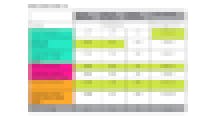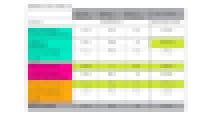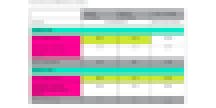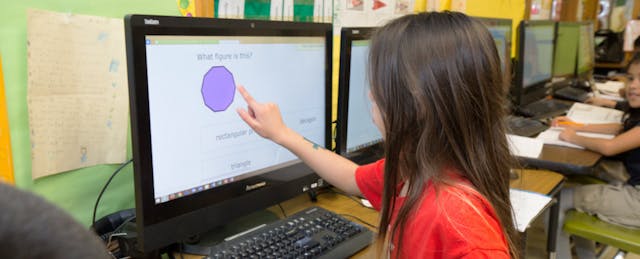Students at Dan D. Rogers Elementary School in Texas get an unusual introduction to technology. As they transition from first grade, to second, to third, their classroom devices change, too.
One year they’ll use an iPad. The next, they’ll try a Kindle. After that, a Surface device, then a Chromebook.
This isn’t the result of a tech director’s indecision. Personalized learning is core to the model at Rogers Elementary, and Kristen Watkins, director of the personalized learning program at Dallas Independent School District, says that exposing students to multiple devices is an intentional part of the school’s approach.
But technology is only one part of it. The school also incorporates projects, flexible environments and student-led learning into its model.
Rogers Elementary is one of 10 “wall-to-wall” personalized learning schools that recently emerged as part of an initiative at Dallas ISD—one of the largest school districts in the country, serving 157,000 students. In addition to those 10 schools, another 130 have started using what Watkins refers to as "light-touch blended learning," a variation of the district's wall-to-wall model. The district has prioritized measuring student progress, and after capturing preliminary results that point toward academic and personal growth, it’s scaling the model.
The 13 members of the district’s personalized learning team are proud of how the initiative has evolved. But it was no easy feat, and it didn’t happen overnight. It has taken over four years of intensive planning, strategizing, trying, failing and trying again.
Getting Started
Personalized learning is not a novel concept, despite increased interest and adoption in recent years.
“Teachers have known for a long time this is the best way to teach,” says Courtney Rogers, manager of personalized learning growth for the district. “The difference is we now have the tools and technology to implement this at scale.”
District leaders at Dallas ISD felt that in order to make good on their mission of “educating all students for success,” they needed to provide a diverse range of school models. In Fall 2013, after receiving a Next Generation Systems Initiative grant from the Bill and Melinda Gates Foundation, the district began planning to launch a personalized learning initiative as part of this effort to give families more choices.
The following February, the district sent an email to school leaders gauging interest in participating in the initiative. Of the district’s 230 schools, 36 expressed interest in being a test school, eight participated in the pilot and five ultimately received funding and support to launch the wall-to-wall model in Fall 2015.
The cohort consisted of three elementary schools (including Rogers Elementary), one middle school and a new high school that had only ninth graders.

Tackling a Steep Learning Curve
One of the early lessons the district learned is that the transition was more difficult for older students.
The elementary schoolers didn’t miss a beat. “This was just school to them,” Watkins explains. But the middle and high schoolers struggled with their newfound autonomy. It wasn’t that they didn’t like it, she notes. They just weren’t used to making decisions.
They didn’t know if they preferred working in a small group, directly with the teacher or independently using a self-paced video. For students who had previously been told to sit at their desks and open their textbooks to page 37, these choices could feel overwhelming, Watkins shared.
After conducting “empathy interviews” with older students in the cohort schools, Watkins’ team realized they needed to scaffold more so the new model wasn’t such a stark change.
Another early challenge they faced was getting everyone on the same page. Though everyone involved in the initiative had read the same research and case studies, “when we sat at the table, we couldn’t figure out how to talk about it,” Watkins says. “Everyone had a different understanding of the work.”
In response, they developed a personalized learning rubric to build a shared language to support their conversations.
There’s a common misconception—at Dallas ISD and elsewhere, Watkins says—that “personalized learning” is code for learning with technology. But “personalized learning is something you could do with no devices.” And to drive the point home, the rubric doesn’t even mention technology.
Rogers adds that it doesn’t require a lot of resources either. Only four of the five original personalized learning schools received resources from the district to implement their version of the model. The school that didn’t—Ignacio Zaragoza Elementary—saw the greatest improvements in student progress.
What Schools Can and Can’t Quantify
In 2017, after the first two years of implementation, data indicated that the new approach was improving learning outcomes in the cohort schools.
The district looked at the State of Texas Assessments of Academic Readiness (STAAR) math and reading scores as one method for measuring success. The results, published in an impact report in May 2018, have been positive—for the most part.
Each personalized learning school is compared to its feeder pattern—the group of K-12 schools in its geographical zone—and the district average.

Before the personalized learning initiative, students at Zaragoza Elementary were outperforming their peers in the district by 6 percent in math and 3 percent in reading on the STAAR assessment. After two years, the school's performance increased to 17 percent above the district average in math and 14 percent above in reading.


Though most of the early data signaled improvement, the struggles that high school students faced in adjusting to the new model are reflected in their end-of-course English exam scores, which decreased an average of 7.5 percent. Their math scores improved only marginally.
It’s tricky to determine causation here, Watkins says. She believes that a convergence of factors was responsible for the dip in English scores—not just the abrupt shift to a new model. The data only represents one class in the high school, which was in its first two years of existence.

The progress measured by standardized tests is informative for the district, Rogers says, but it only tells part of the story.
“If a kid is experiencing a high-quality personalized learning environment, they’re going to have more agency, stronger grit, a persevering attitude,” she claims. “How do we measure that? We don’t have a clear answer yet.”
Anecdotally, she notes that the initiative is having a far greater impact on students than the test scores can ever reveal.
“They really get to know one another in this environment, build stronger relationships and build a support network in a deeper way,” Rogers says. She attributes the strengthened relationships to two main factors: the cohort schools’ project-based approach and learner profiles, which detail students’ strengths and areas for growth.
She also notes that during the “empathy interviews,” students repeatedly say that for the first time in their schooling experience, they don’t feel like misfits.
That’s likely because the cohort schools intentionally create an inclusive culture where every student’s voice matters, Watkins says. This is evident in the teacher hiring process. When administrators are interviewing for a new teacher, students have a chance to weigh in. They’re invited to meet the candidates and ask questions during the interview.
“They sit up a little bit straighter in their chair when they are asked to be a part of that,” she adds.
“That [sense of belonging] is something we don't know how to measure,” Roger adds, “but we see it happening, and it’s really powerful.”
Growing the Movement
The initiative has doubled since it launched in 2015, now serving 4,500 students at 10 schools. Hundreds of students have elected to transfer to a personalized learning school, and thousands applied for one of the 718 seats available at the lottery-based personalized learning high school and the new middle school that opened this fall.
In response to demand from teachers and administrators, the district introduced three professional development pathways for adopting personalized learning practices without becoming a cohort campus. One is a 10-month fellowship for teachers focused on blended, personalized and project-based learning. Another is a series of year-round workshops for principals within feeder patterns. The third is creating communities of practice, where educators meet virtually and in-person.
Through these four avenues, Watkins estimates that her team is working with half the schools in the district.
“It’s just taken off,” Rogers says of the initiative. “School leaders immediately recognize this as beneficial—something they need and want. It’s never been required, yet it’s very quickly becoming district-wide.”


